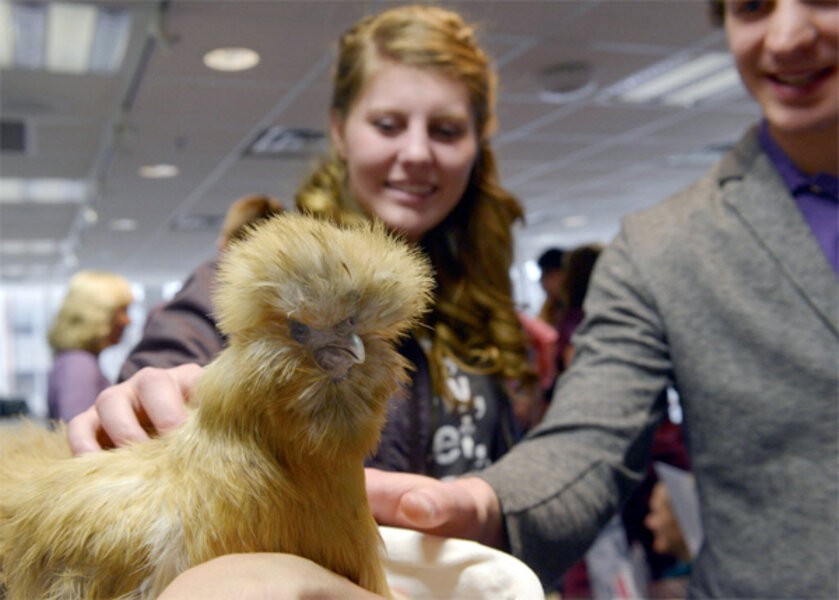Taxing taxonomies and 'the Chicken From Hell'
Loading...
When I was a young child, I thought one of the fun things about being Adam or Eve would be getting to come up with names for all the creatures around us in Eden. In the years since, I have learned that language is too complex a phenomenon for any one, or even two, people simply to make up.
More recently, a conversation with a vertebrate paleontologist has reminded me that the naming of life-forms around us is an even more nuanced business than I realized.
In a recent lecture, she showed a slide of a shark, a bony fish (what I in my imprecision would call "a regular fish"), and a chicken. The question was, Which two are more closely related? The shark and "the regular fish," plainly. But I was sure it was a trick question. And so I knew we would hear that the bony fish and the chicken were actually the two closer kin.
And so it turned out. Sharks have cartilaginous skeletons, "very different from those of bony fish and terrestrial vertebrates," e.g., chickens. (Thank you, Wikipedia.) And the bony fish and the chicken turn out to have a more recent common ancestor.
"We think of fish and birds, and we think of birds as more like us than fish are. And we think of all fish being kind of in one category," the professor commented afterward. "When you start putting names on things, then, the word fish becomes completely a lay term. Fish is this accumulation of taxa that fit our mind-view of things that swim in the water or whatever, whereas if you have to have a scientifically correct terminology, then a bird becomes a kind of bony fish."
(A taxon, plural taxa, is, by the way, a unit within a taxonomy, or classification system.)
This terminology is "a challenge to the lay public," she conceded, "because it doesn't make sense." She added, "The word reptile is typically not used anymore, because reptile includes birds. So you have to say 'non-avian reptiles' or something like that in science."
And now, as if to reinforce her point, scientists have announced the discovery of "the Chicken From Hell." It's a newly discovered species of dinosaur that thrived 66 million years ago. The three nearly complete skeletons, discovered near South Dakota's Hell Creek Formation, represent the largest oviraptorosaurs – "egg thief lizards"– ever.
They are thought to have been 11 feet long, weighed about 500 pounds – and had feathers. Artists' conceptions show a kind of monstrous ostrich – "an animal from a Colonel Sanders nightmare," as a Washington Post writer put it.
It was "as close as you can get to a bird without being a bird," one of the researchers, Matt Lamanna, told the National Geographic Society.
What does all this mean for us as we look at and (because this is a column on language) verbalize the world around us?
Writers often have to choose between the precise term and the more accessible term – in some contexts there's room for both, but not always. And so we can try to remember to speak of the "birds and mammals" of the forest, for instance, if that's what we mean, rather than "birds and animals."
Observation and classification are essential processes of science, and they're important to language, too. We need to be alert to new possibilities of understanding – because you never know when a chicken from hell will try to cross your path.







